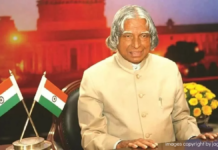On November 26, 2008, India witnessed one of the darkest chapters in its history—a series of coordinated terrorist attacks that brought Mumbai, the financial capital of the country, to its knees. Known as the 26/11 Mumbai Attacks, this horrific event lasted for four days, claiming 166 lives and leaving over 300 injured. The tragedy not only exposed vulnerabilities but also showcased the unbreakable spirit of the city and its people.
The Timeline of Horror
The attacks began on the evening of November 26, 2008, when ten heavily armed terrorists from the Pakistan-based group Lashkar-e-Taiba infiltrated Mumbai via the Arabian Sea. Dividing into smaller groups, they targeted key locations to create maximum chaos:
• Chhatrapati Shivaji Maharaj Terminus (CST): A bustling railway station turned into a war zone as gunmen opened fire on passengers, killing 58 and injuring over 100.
• Leopold Café: This iconic café in Colaba became one of the first sites of attack, leaving several dead and injured.
• Taj Mahal Palace Hotel: A symbol of India’s heritage and hospitality was under siege for three days. Hostages were taken, and massive damage was inflicted.
• Oberoi-Trident Hotel: Another high-profile target where terrorists wreaked havoc, killing many and holding several hostages.
• Nariman (Chabad) House: A Jewish community center was attacked, resulting in a heartbreaking loss of life, including Rabbi Gavriel Holtzberg and his pregnant wife Rivka.
The Unsung Heroes
Amidst the chaos, Mumbai witnessed extraordinary acts of bravery:
• NSG Commandos: The National Security Guard launched “Operation Black Tornado,” neutralizing nine terrorists and rescuing over 600 hostages.
• Mumbai Police: Officers like Tukaram Omble, who sacrificed his life while capturing Ajmal Kasab, the lone surviving terrorist, became symbols of courage.
• Taj Staff: Employees of the Taj Hotel risked their lives to protect guests, showcasing unmatched dedication and bravery.
Aftermath and Impact
The attacks exposed gaps in India’s intelligence and counter-terrorism strategies. However, they also led to significant reforms:
• Strengthened Security Infrastructure: The establishment of the National Investigation Agency (NIA) and the modernization of police forces were direct outcomes.
• Public Awareness: The tragedy heightened awareness about terrorism and the importance of vigilance among citizens.
Remembering the Victims
Every year, November 26 is observed as a solemn day to honor the victims and heroes of the 26/11 attacks. Memorials and tributes are held across the country to ensure their sacrifices are never forgotten.
Films and Documentaries That Chronicle 26/11
To truly understand the magnitude of this tragedy and the resilience of Mumbai, several films and documentaries capture the essence of 26/11:
- The Attacks of 26/11 (2013): Directed by Ram Gopal Varma, this dramatized account depicts the events leading up to and during the attacks.
- Hotel Mumbai (2018): A gripping retelling of the siege at the Taj Mahal Palace Hotel, showcasing the courage of the staff and security forces.
- Surviving Mumbai (2009): A documentary featuring survivors’ harrowing accounts of the attacks.
- Taj Mahal (2015): A French film that portrays the experience of a guest trapped inside the hotel during the siege.
- State of Siege: 26/11 (2020): A web series highlighting the NSG operations to counter the attacks.
The Spirit of Mumbai
Despite the immense pain and loss, the 26/11 attacks couldn’t break Mumbai. The city bounced back with unparalleled resilience, proving why it’s often referred to as the City That Never Sleeps. The legacy of 26/11 serves as a stark reminder of the need for unity, vigilance, and strength in the face of adversity. - Let us take a moment today to remember the lives lost, honor the heroes who stepped forward in those dark hours, and pledge to never forget the lessons of 26/11.




















